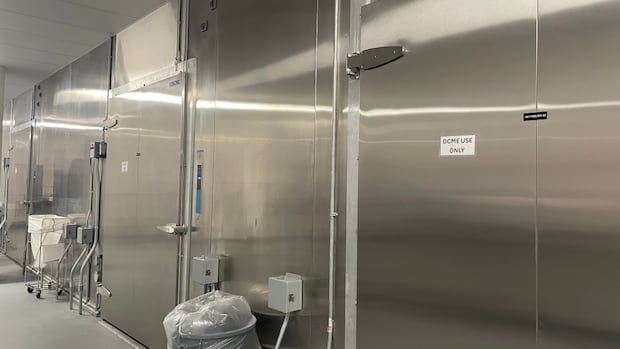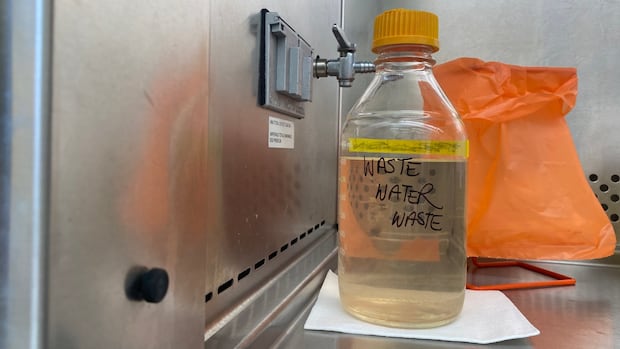Newfoundland and Labrador has vastly increased the number of bodies it can store in a new morgue facility in St. John’s, say health authority officials.
Daniel Parsons, senior director of provincial capital planning and engineering with Newfoundland and Labrador Health Services, said this new facility consists of two fridge units and two freezer units, which is located off a hallway in the parking garage of the Janeway Children’s Hospital.
He said the original morgue facility was constructed in the 1970s and had a capacity of 12 bodies. The new facility can store 96 bodies.
“What we’ve done here is significantly increased our capacity,” he told reporters on Friday during a tour of the facility.

Ron Johnson, chief operating officer of the health authority’s eastern-urban zone, said having this expanded facility is a boon, including for those who work there, but it’s also a matter of “perception.”
“We wanted to ensure that … people’s bodies and families and others were dealt with in a very professional way. In a very caring way and empathetic way,” said Johnson.
“So I think this new facility does that.”
Johnson said the new facility came online in early June.
Corey Murray, senior director of pathology and laboratory medicine, said the new space is ergonomically designed and is safer for staff.
“The older space again was very confined. We had a very limited capacity. So it was difficult at times to be retrieving a decedent, either for the funeral home or for autopsy services,” said Murray.
Unclaimed bodies won’t ‘pile up’
CBC News first reported 28 bodies were being stored in freezer units outside of the Health Sciences Centre in St. John’s due to a lack of space in the morgue in March 2024. The morgue doubles as the Office of the Chief Medical Examiner.
The freezers were later relocated to the hospital parking garage — where the new, expanded morgue has been constructed.
The provincial government amended legislation, which was filed on Dec. 24 and came into effect on Jan. 1, that empowered the health authority to bury unclaimed remains after two weeks of searching for next of kin and then five days after the identity of the person is posted online on a dedicated website.
Between legislation and the expanded facility, Johnson said he doesn’t anticipate they will have to tackle a growing number of unclaimed remains again. However, he said there may be other reasons they would need more storage, like a “mass event” that causes numerous deaths.
“There always will be a need, but I’m not anticipating that these unclaimed remains will pile up again,” said Johnson.
Download our free CBC News app to sign up for push alerts for CBC Newfoundland and Labrador. Sign up for our daily headlines newsletter here. Click here to visit our landing page






